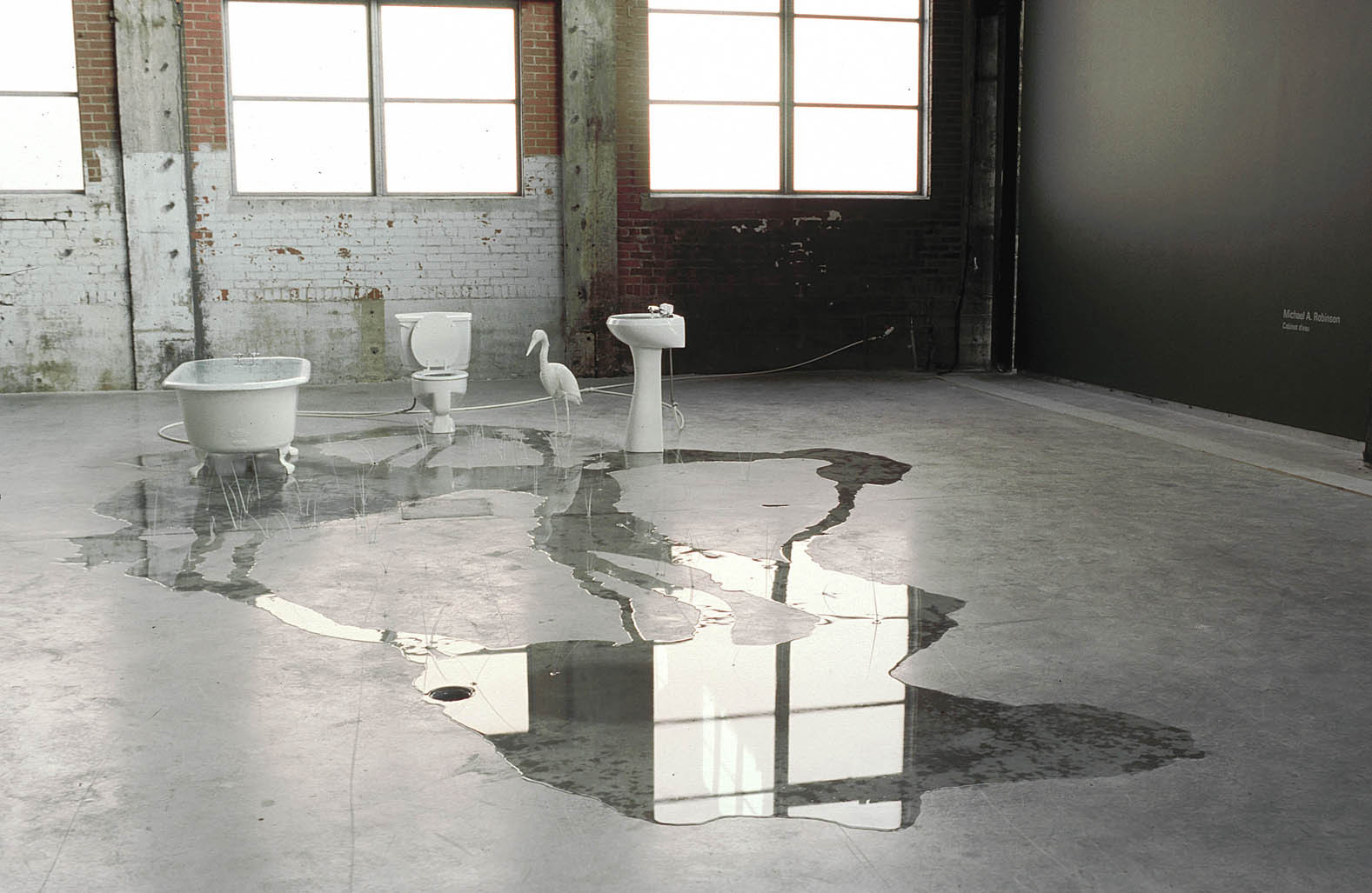

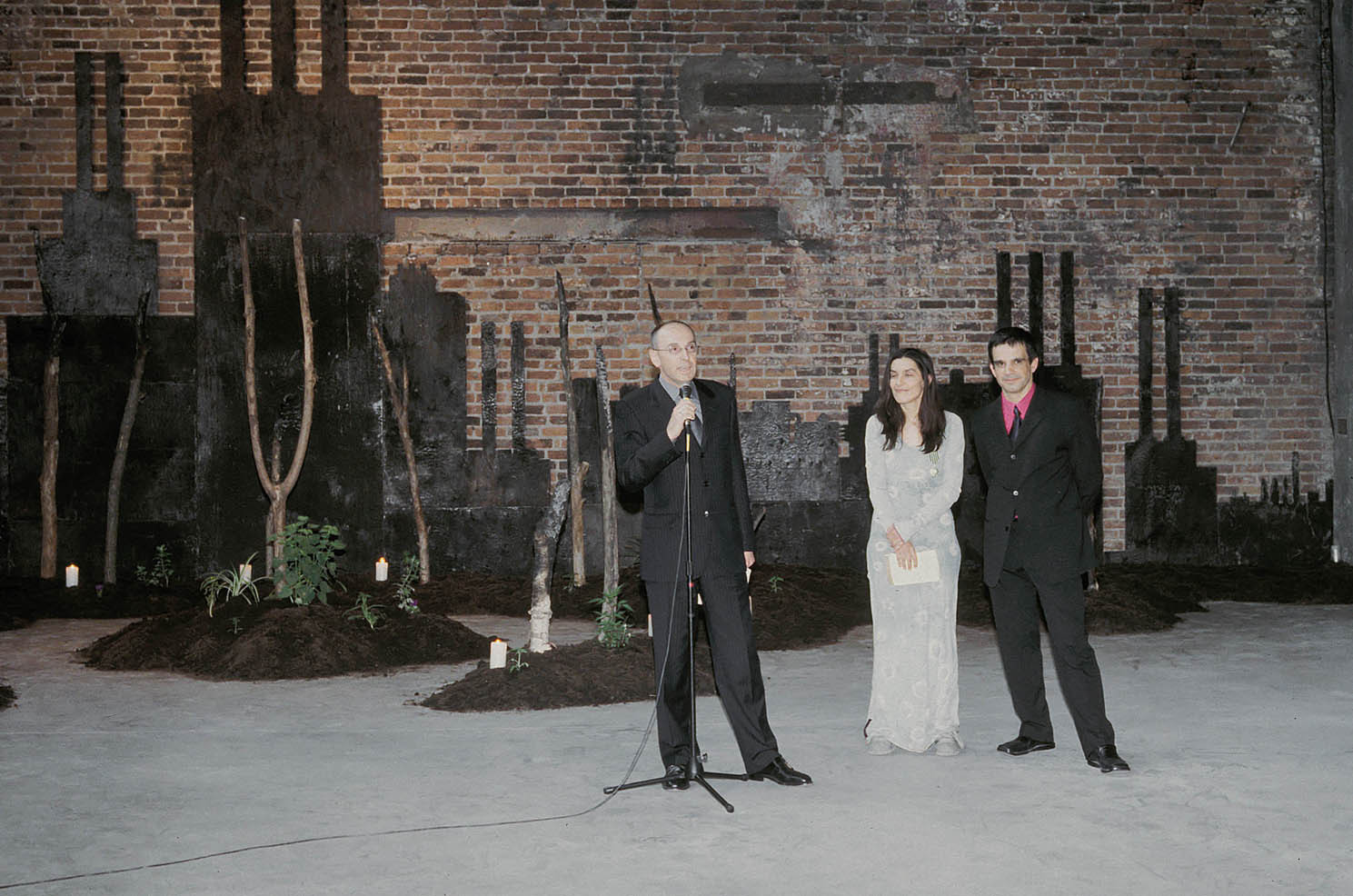
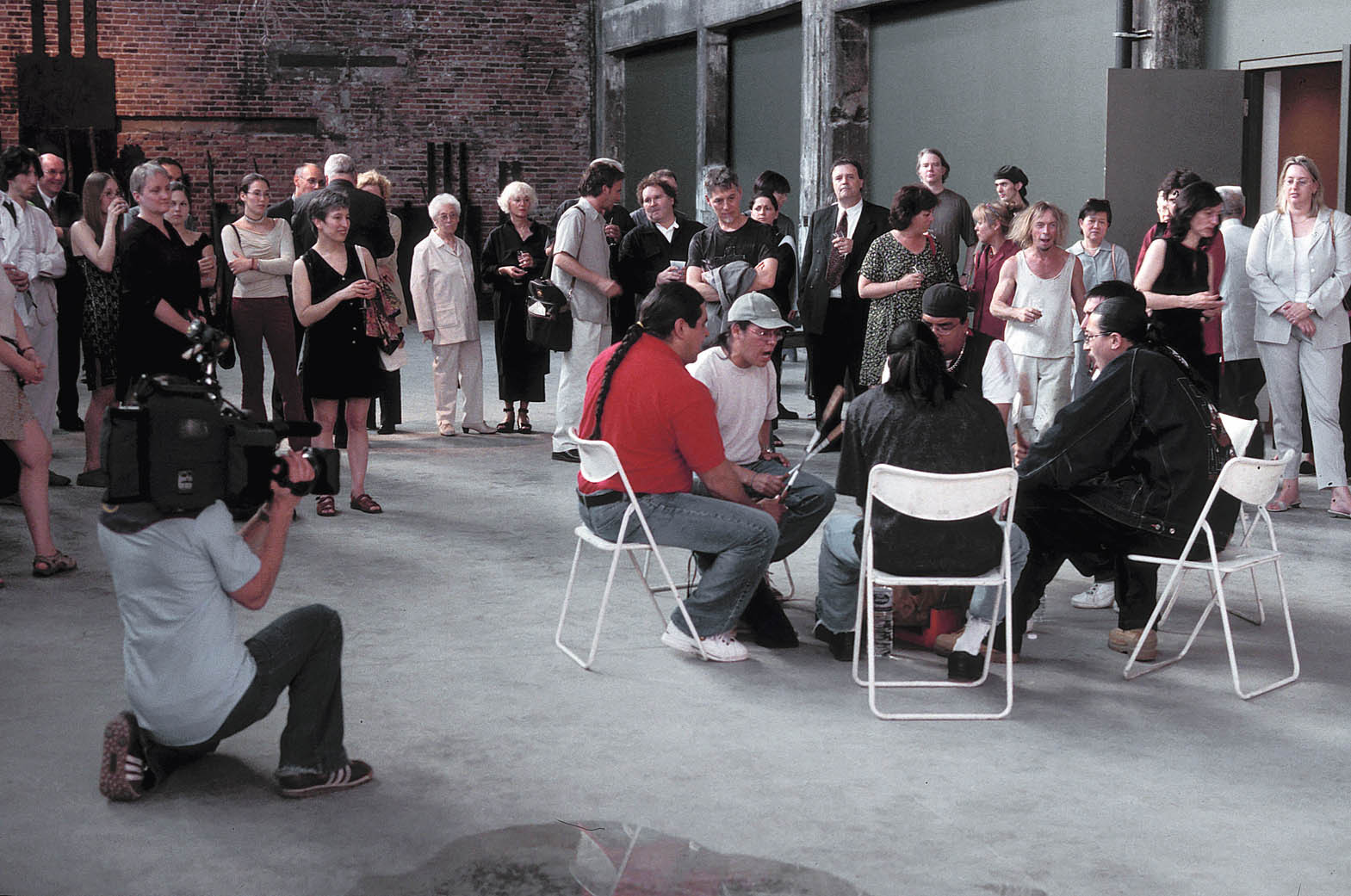
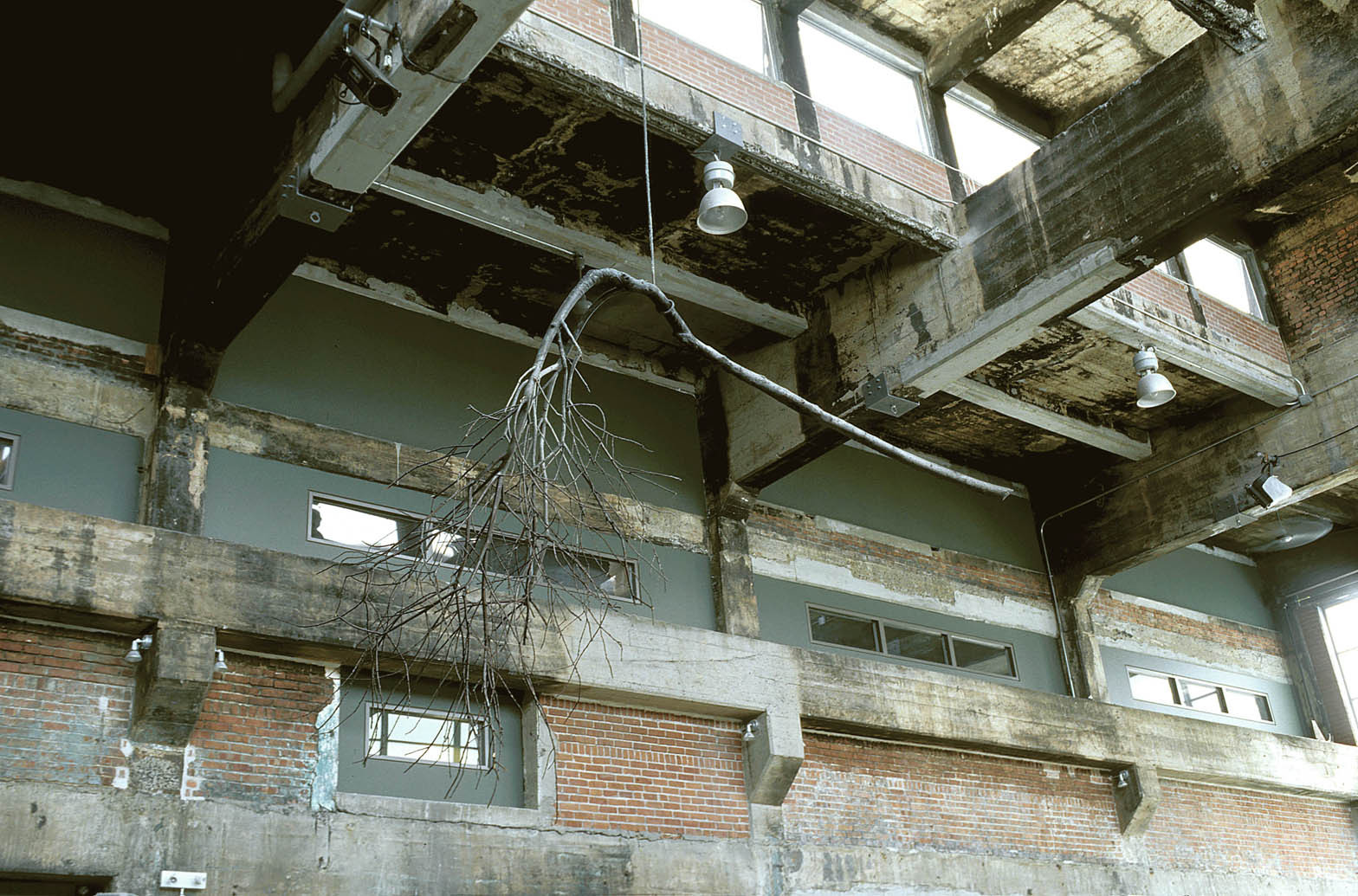
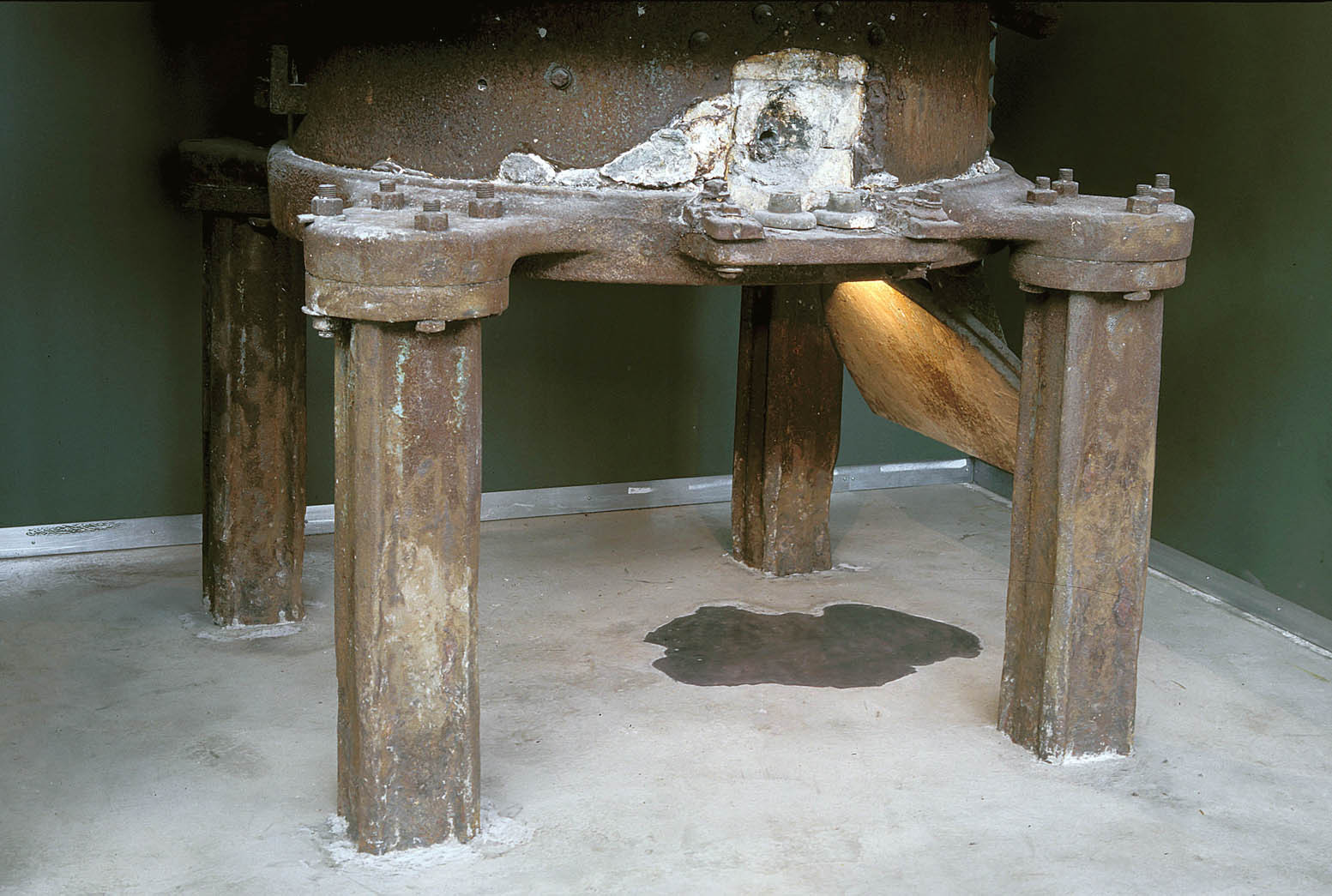
Thirty spokes unite at the hub but the ultimate use of the wheel depends on the part where nothing exists. Clay is molded into a vessel depends upon the part where nothing exists.Doors and windows are cut out of the walls of a house but the ultimate use of the house depends upon the parts where nothing exists. So, there is advantage in using what can be seen, what exists. And there is also advantage in using what cannot be seen, what is non-existent.
This reconversion of the foundry following a period of 100 years of industrial activity and ten years of abandon, is not without significance: it is undertaken with an engagement to respect its past, its experience, to mark a pause, and to render homage, while orienting the building towards its new vocation.
QUARTIER ÉPHÉMÈRE has chosen to present a symbolic exhibition which draws inspiration from a principal of Tao philosophy favouring the balance of the Yin and Yang energies through the Elements : to metal, wood, fire, earth, metal and water corresponds a colour, a direction, a season, a viscera, a flavour, a form... An art to understand how to harmonize them, an alchemy to measure them, sometimes through their conflict, sometimes through their union, they are at the source of all things.
Each one of these elements inhabited the foundry in its days of operation: the metal in the fabrication of its products, the wood which fuelled the fire, the earth into which the molten metal was poured, the water that cooled the fusion. These five elements are not fixed references, but rather base components in constant mutation. The cycle in reccurence remains the same: the wood begets the fire, the fire begets the earth, the earth begets the metal and the metal begets the water which begets the wood... As soon as one ends, another begins. There is no linearity of time, but a cyclical perception. The Darling Foundry thus concludes its industrial cycle of life in order to begin again on fresh and harmonious ground brought about by an artistic vocation. This premise confers on the five exhibited works a uniting force and an integration with their environment. The presented installations, references to the Taoist tradition in their search for the equilibrium of the site, become witnesses to the creation of a symbolic world specific to the Ultra Vide exhibition. As a constraint, each artist works with an element in its raw state and introduces the begotten element through presentation, suggestion or metaphor.
WORKS
The highest motive is to be like water: water is essential to all life, yet it does not demand a fee or proclaim its importance. Rather, it flows humbly to the lowest level,
and in so doing it is much like Tao.(ch. 8) Michael Robinson explores the element Water and invests the space by creating an illusory bathroom. While the bathtub, sink and toilet attempt to control the water, it calmly overflows and nourishes plants and aquatic birds along the way. Cabinet d'Eau refers to two different spheres, domestic and ecological, which answer one another in a tone of anachronism. (Lao Tseu ch. 11) The Darling Foundry, the new visual arts centre of QUARTIER ÉPHÉMÈRE, with its rich industrial, social and economic past has been converted into a site for exchange and celebration of culture and the arts. The foundry remains a testament to the former Griffintown neighbourhood, an important site of metallurgy and a spearhead of the Canadian economy at the beginning of the last century, and a witness to the abatement of work in the area eight years ago.
When living, man is supple and yielding; when dead, man is hard and stiff. When living, all plants and trees are soft and pliant; when dead, they are withered and brittle. Thus, being inflexible and unyielding is part of dying; being flexible and yielding is part of living. (c.h 76) Patrick Beaulieu, diverter of the natural cycle of conifers, chooses to represent the element Wood. He suspends a dead tree branch from the ceiling, which is animated into artificial life by a motor. Its excessive rotation lends the branch the elegance and lightness of a dancer, and generates a subtle heat which introduces the element Fire.
Whoever knows does not speak; whoever speaks does not know. So, stop the senses. Close their doors. Solve their riddles. Subdue their light. Be one with humble dust. This is the mystic unity. It is beyond love and hate, beyond profit and loss, beyond honor and dishonor. Thus, it is the most valuable treasure in all the world. (ch. 56). Carlos Ruttan presents the element Fire at the heart of a massive installation of logs and charred wood. Juxtaposed together they evoke the skyline of a city after a fire, and the ashes from their combustion mix with the earth dispersed on the ground.
Whoever is aware of the white (Yang) yet retains the black (Yin) is as a standard for all the world. He has Teh and has returned to the Absolute.
Whoever is aware of fame and glory yet retains humility and obscurity is as a valley that can hold the earth. He has T e h and has returned to Unity.
(ch. 28) Maria Jose Sheriff uses grey clay to represent the element Earth. Employing a utopian symmetry, the "artist-surveyor" has moulded sections which are delimited by coloured threads. In constant mutation, the moist and malleable material gradually dries and cracks. This arrangement of volume – through its desiccation, the gentle incline of its surface, the lozenge shape of each mass and through the sentence written on the wall : "un rayon de lumière parti droit devant lui reviendrait à son point de départ" (a beam of light which travels directly forward will return to its point of departure) – gives a surprising lightness to over five tons of clay.
Whoever stands on tiptoe is unsteady; whoever walks with long strides cannot long keep up the pace; whoever makes a show of himself cannot shine;
whoever is self-righteous cannot gain the respect of the people; whoever is self-centered cannot become loved by others; whoever seeks glory cannot become a true leader.(ch. 24) Serge Provost introduces the element Metal with three puddles made of lead. They suggest water in their shape, appearance and the reflective character of their surfaces. When the foundry was still in a state of abandon, rainwater infiltrated the roof and collected in puddles on the uneven surface of the floor. Recalling the technique of metal casting employed in the foundry, Provost moulded these hollows with lead which he then saved to be integrated into the new floor. The element of metal, so present in the foundry, now occupies the space minimally and continuously.
The mystical theme of Ultra Vide, purposely in contrast to new technological practices, presents works conceived with materials in their raw state. In the whirlwind course of new technologies, artists attempt to give meaning to their works and often find themselves lost in the meandering of technology. The precepts of Taoist philosophy, thousands of years old, restore to the works a sense of humility, spirituality, and propose a critical content.
Text by Caroline Andrieux
Michael Robinson
Michael A. Robinson lives and works in Montreal.
Patrick Beaulieu
Patrick Beaulieu is a multidisciplinary artist. His work consists of a series of journeys which throw into relief, in installations, videos, photographs or in situ/in installation. In 2002, he took part of the Flag Project, a collective installation addressing crumbling territorial identities at the Gwangju Biennale in Korea.
Carlos Ruttan
Carl Ruttan was born in Ontario and graduated from Ottawa University. His work is composed of drawings, paintings, photography and sculptures. He developed a practice inspired by natural elements ever since he participated in "The Hidden Stone", a project realized at La Minerve by the Boréal/Art Nature artist centre. He also took part to some exhibitions in Ottawa and Montreal, notably at Gallery 502 and Articule.
Maria José Sheriff
Born in La Paz, Bolivia, Maria Sheriff currently lives in Montreal. From a young age she was interested in poetry and art and had a passion for the pure sciences. She holds a Bachelor in Fine Arts from Concordia University (1992) and a Master in Visual and Media Arts from the Université du Québec à Montréal (UQAM) (2000).
Among her solo exibitions, of mention are Synchrone at Clark Gallery in Montreal, 1998 ; Dissonances at the Écart Gallery in Rouyn-Noranda, 1999; Recent Scultures and Drawings at B-312 Gallery in Montreal, 1999; Aphélie et Périgée at Circa Gallery in Montreal, 2000; as well as Mémoire Minérale at the Art Gallery of Ontario in Toronto, 2003-2004.
Serge Provost
Serge Provost graduated from the Bordeaux Fine Arts (France). Serge Provost teaches art in Toulouse since 1994 and at the Bordeaux Architecture School. He participates in a lot of exhibitions in France and abroad. During a residency at Quartier Ephemere in 2000, he realized "Flaques d'Eau", an art work integrated into the architecture of the space.
More about
FranceMontréal, Canada
Ontario, Canada
La Paz, Bolivia
France
Curator
Caroline Andrieux
